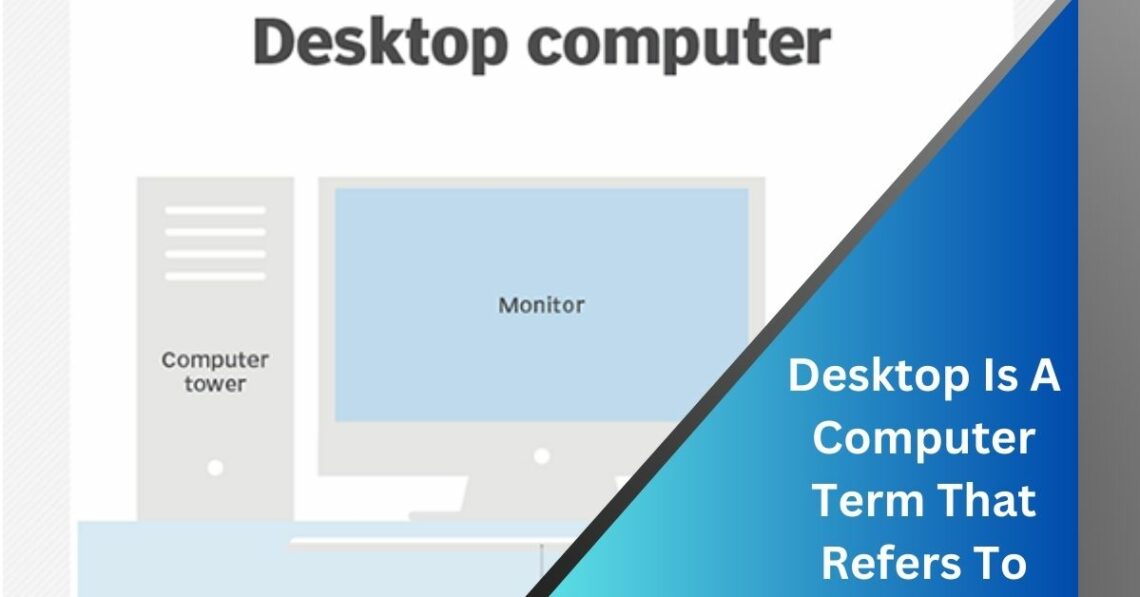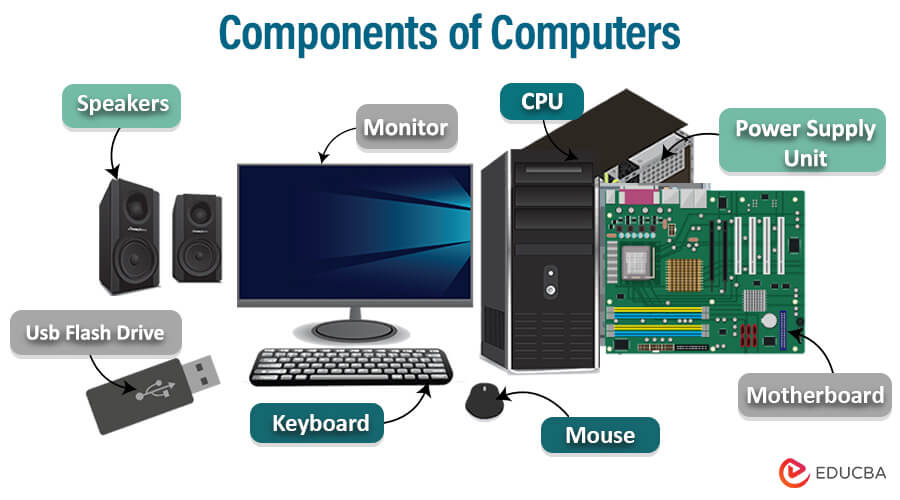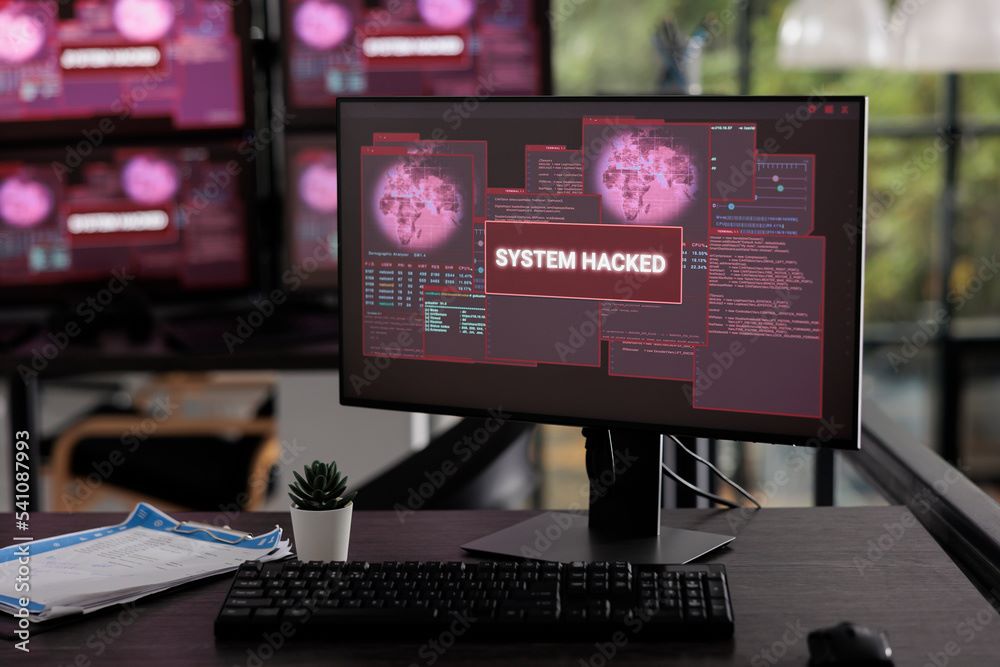
Desktop Is A Computer Term That Refers To – Let Us Explore!
The desktop is our computer’s digital workspace, where we organize files and programs, making it our personalized hub for digital activities.
Desktop is a computer term” commonly used to describe the primary interface users see when accessing their computer, akin to a virtual workspace.
Let’s explore! “Desktop is a computer term that refers to” the virtual hub where all our digital adventures begin.
What Is A Desktop? – Unlock Digital Hub!
A desktop is like the main screen of your computer. When you turn on your computer, the desktop is the first thing you see.
It’s where you can find icons for your programs and files. Think of it like the homepage of your computer, where you can start doing all your work.
On the desktop, you can see icons representing different things on your computer. These icons look like little pictures of folders, files, or programs.

You can click on these icons with your mouse or touchpad to open and use them. It’s like having your digital desk where you keep all your essential stuff.
People often like to personalize their desktops by changing the background picture or arranging the icons in a certain way. It’s like decorating your room to look just how you want it.
The desktop is where you start your computer journey every time you log in, making it a critical part of using your computer.
When Do You Encounter A Desktop – Navigate Digital Interface!
You encounter a desktop every time you start your computer, just like when you open the door to your room when you come home.
Turning on your computer shows you the desktop screen. The first thing that pops up on your computer screen when logging in.
When you see your desktop, it’s like seeing a clean slate waiting for you to start your work or play. It’s where you find shortcuts to all your favorite programs and files.
Like how you have your favorite toys or books neatly organized in your room, the desktop helps you find what you need on your computer.
Whether you’re getting ready to do homework, play games, or browse the internet, your desktop is always prepared to help you get started.
So, every time you turn on your computer, you’re sure to meet your trusty desktop waiting for you to begin your digital adventures.
Why Is A Desktop Important? – Discover Virtual Platform!
The desktop is vital because it’s like the control center of your computer. It helps you do all sorts of things, like opening programs, finding files, and changing settings.
Just like you need your backpack to carry all your school supplies, the desktop helps you keep everything organized and easily accessible on your computer.
Imagine if you didn’t have a desktop on your computer. It would be like finding your favorite toy in a messy room with no shelves or drawers.
The desktop makes it easy to see all your programs and files at a glance, so you can quickly find what you’re looking for without getting lost in a digital mess.

Another reason why the desktop is essential is that it lets you personalize your computer. You can change the background picture, move around icons, and add shortcuts to your favorite programs.
It’s like having your own unique space on your computer that reflects your personality and makes using it more fun and enjoyable.
So, the desktop isn’t just a screen on your computer – it’s a helpful tool that makes your digital life easier and more enjoyable.
How Does A Desktop Work – Learn Desktop Mechanics!
Visual Interface:
A desktop works by providing a visual interface on your computer screen. It displays icons, buttons, and other graphical elements representing files, folders, programs, and settings.
Interaction:
You interact with the desktop using a mouse, touchpad, or keyboard. You can click on icons to open files and programs, drag and drop items to move them around, and use menus to access various functions and settings.
Organization:
The desktop allows you to organize your digital workspace by arranging icons and files in a way that makes sense. You can create folders to group related items together, making it easier to find and access them later.
Customization:
One of the critical features of a desktop is its ability to be customized according to your preferences. You can change the desktop background, resize and rearrange icons, and add widgets or gadgets to access information or functions quickly.
Accessibility:
The desktop provides a central hub for accessing all the resources and tools on your computer. It is a starting point for launching programs, opening files, and adjusting settings, making navigating and using your computer efficiently easier.
Multitasking:
A desktop allows you to multitask by having multiple windows and applications open simultaneously. Thanks to the desktop’s intuitive interface and organization features, you can seamlessly switch between different programs and tasks.
Read Also: WHO CAN FAMILY NURSE PRACTITIONERS WORK WITH?
Desktop Components and Their Roles – Explore Desktop Functionality!

| Component | Role |
| Processor (CPU) | Performs calculations, executes instructions, and manages data processing tasks. |
| Memory (RAM) | Temporarily stores data and instructions for quick access by the CPU, enabling multitasking and efficient program execution. |
| Storage (HDD/SSD) | Stores data permanently, including the operating system, programs, files, and documents. HDDs provide large storage capacities, while SSDs offer faster performance and durability. |
| Motherboard | Connects and coordinates all components, providing communication via buses and ports. Houses essential components such as BIOS and expansion slots. |
| Graphics Processing Unit (GPU) | Handles rendering and display of graphics on the monitor, accelerating graphics processing tasks for multimedia-intensive applications. |
| Power Supply Unit (PSU) | Converts electrical power from an outlet into usable energy for the computer’s components, ensuring stable operation and sufficient power delivery. |
| Peripherals | Input and output devices that allow users to interact with the computer and receive output in various forms, expanding functionality and usability. Examples include keyboards, mice, monitors, printers, speakers, and external storage devices. |
Operating System and Desktop Interaction” – Discover Desktop Operation!
Initialization:
When you start your computer, the operating system (like Windows, macOS, or Linux) loads first. It initializes essential processes and services needed for the desktop environment to function.
Desktop Environment Loading:
Once the operating system runs, it loads the desktop environment. This environment includes elements like the wallpaper, icons, taskbar, and menus, providing a graphical interface for interacting with the computer.
User Interaction:
The desktop environment allows users to interact intuitively with the operating system and its features. Users can navigate menus, open programs by clicking icons, and manipulate windows to perform tasks.
Resource Management:
The desktop environment manages system resources such as memory, CPU usage, and disk space. It ensures that applications run smoothly and efficiently, allocating resources as needed to prioritize user tasks.
Integration with System Services:
The desktop environment integrates with system services provided by the operating system, such as file management, networking, and security.
This integration allows users to access and manage files, connect to networks, and configure system settings directly from the desktop interface.
Customization:
Users can customize the desktop environment to suit their preferences. This includes changing the desktop wallpaper, rearranging icons, and configuring settings like display resolution and desktop themes.
Accessibility Features:
Desktop environments often include accessibility features to accommodate users with disabilities. These features may include screen readers, magnification tools, and keyboard shortcuts designed to enhance user usability.
Communication with Hardware:
The desktop environment communicates with hardware components through device drivers provided by the operating system.
This communication enables users to connect and use peripherals such as printers, monitors, and external storage devices seamlessly.
Error Handling and Notifications:

The desktop environment handles errors and displays notifications to alert users about system events, updates, or issues that require attention. This helps users stay informed and take appropriate actions to maintain system health and performance.
Read Also: CUÍDELO – CHRONICLES SIMPLIFYING LIFE RESPONSIBLY!
FAQs:
1. How do I connect peripherals to a desktop computer?
Peripherals like keyboards, mice, monitors, and printers can be connected using USB ports, HDMI or VGA ports for monitors, and other compatible ports on the computer’s motherboard or expansion cards.
2. What operating systems can I use on a desktop computer?
Desktop computers support various operating systems like Windows, macOS, and Linux, allowing users to choose the system that suits their needs and preferences.
3. How do I maintain and troubleshoot my desktop computer?
Regular maintenance involves keeping the computer clean, updating software and drivers, and performing routine backups. Troubleshooting common issues may require diagnostic tests, driver updates, or professional help.
4. Can I upgrade my desktop computer?
Yes, desktops are designed to be easily upgradable. Components such as CPU, memory, storage, and graphics card can be upgraded to improve performance or add new features over time.
Conclusion:
Desktop computers stand as versatile tools for a range of computing needs. Their robust hardware, ease of customization, and upgradability make them reliable platforms for productivity and gaming tasks.
Read Also:
FITOSTERINA – NATURE’S GIFT TO YOUR HEALTH!
CASSASSE – A TRADITIONAL DISH WITH HISTORICAL SIGNIFICANCE!
You May Also Like

Smart Square Thedacare – Let’s Explore In 2024!
January 23, 2024
Craigslist Everett – Unlocking Local Treasures!
January 11, 2024

